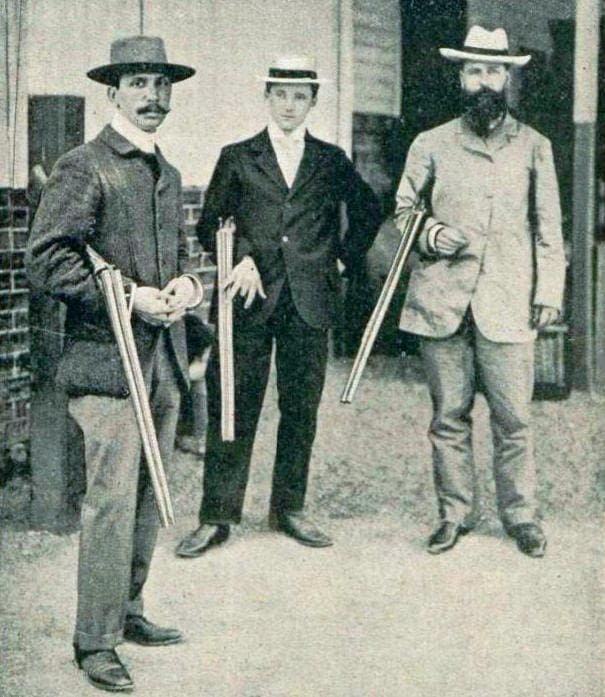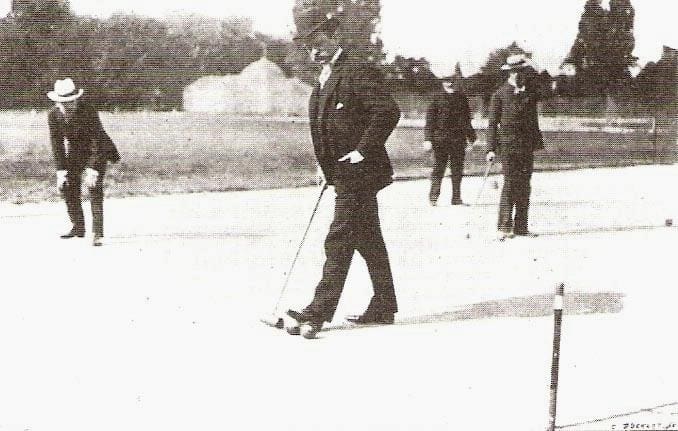In 1900, the types of sports (recognized or not by the IOC*) indicated a divide between the participants, the audiences and the places where the competitions took place. Paris is thus, in a way, “cut in two”: elite sports in the West and popular sports in the East. Line 1 of the metro, inaugurated for the occasion, connects the two distant spaces as best it can, but Coubertin himself criticizes the choice of certain places.
This symbolic separation is a reflection of the disagreement that prevailed during the appointment of the organizers*. The committee brought together by Coubertin was dismissed because, according to the USFSA, “it represents democratic and sporting France in a way that is really too imperfect”. It is true that it is made up of many aristocrats who, with the military, then have the prerogative of “gentlemen’s” sport. Alfred Picard, the commissioner of the Universal Exhibition, claims the heritage of the “men of 1789”. And Coubertin will have this terrible sentence: “The crowd will have the competitions and the festivals of the Exhibition and we will make Games for the elite: elite of competitors, but also elite of spectators, people of the world, diplomats, professors, generals, members of the Institute. »
In fact, in addition to an obvious distinction based on money, certain sports (such as aerostat, automobile, boat) requiring expensive equipment, it is the entire philosophy relating to physical exercise which is in question. On the one hand, after the defeat of France in 1870 against Prussia, it was a question of “improving the physical strength and moral energy of the country”; on the other, sport, for a certain elite, comes down to a social outing where “amateurism” and elegance seem to be the greatest virtues.
It would take a long time, in fact, 1984 precisely, for professionals to be accepted by the CIO. But in 1900, the English-inspired “sportsman” had to be an amateur, that is to say, he must not have played while being paid and, if we refer to the definition of Amateur Athletic Club of London, that he must not be “neither a worker, nor a craftsman, nor a day laborer” because manual workers are supposed to have a muscular advantage!
The International Competitions of Paris, in 1900, subtly managed to mark a clear difference by organizing different competitions in distinct places for the same sport. Rowing, for example, will see “Sunday rowers” compete in a popular regatta in eastern Paris, while the (official) rowing boat events take place in the West and feature “gentlemen”.
The bourgeoisie, for their part, favor sports where wearing shorts is not required, preferring to compete “in costume”, for example in shooting events, but not just any shooting ! For the people, archery from fairs, for officers, cannon shooting*, for others (“the elite”), deer or wild boar shooting which is practiced among people of “good society”.
And if the marathon is won by a French cabinetmaker* who immediately becomes a popular hero, horse riding, fencing, tennis are the preserve of the happy few, under the gaze of an audience of idlers in their Sunday best who frequent usually the Pré catelan* and the Racing Club.
A similar spirit prevailed in 1924: savate (or French boxing, extremely popular at the time) was a demonstration sport while English boxing was recognized as Olympic. The wrestling and weight-lifting competitions, marked by their fairground origin, attract little audience from the “major competitions”. And, as in 1900, the geographical distribution of the tests indicates a divide. However, in the East as in the West of Paris, new facilities have been built*, but in places that the incorrigible Coubertin will describe as “discarded” and “disgraced”. Too far from the city center and its heritage sites with which the 2024 Olympic Games will strive to reconnect*.
Planning a trip to Paris ? Get ready !
These are Amazon’s best-selling travel products that you may need for coming to Paris.
Bookstore
- The best travel book : Rick Steves – Paris 2023 – Learn more here
- Fodor’s Paris 2024 – Learn more here
Travel Gear
- Venture Pal Lightweight Backpack – Learn more here
- Samsonite Winfield 2 28″ Luggage – Learn more here
- Swig Savvy’s Stainless Steel Insulated Water Bottle – Learn more here
Check Amazon’s best-seller list for the most popular travel accessories. We sometimes read this list just to find out what new travel products people are buying.








